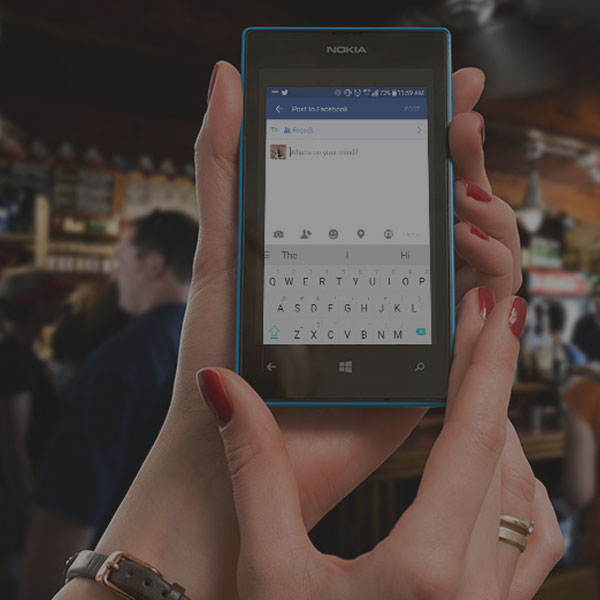
So you’re launching a brand new website design, eh?! Congratulations! One of the best parts of the process is getting to show off the finished result (and drive traffic to the new site, of course). In this article, we walk step-by-step through how to use social media to promote your new website to your brand influencers and ambassadors.
Step 1: Set a date
It is best to plan your big reveal for at least a week after the “soft launch” of your new website. This allows you the opportunity to test all the functionality with real visitors and make final adjustments. Prior to the official launch, plan to share the new site with targeted viewers, like staff members, and ask them to report back any issues that should be addressed.Ideally, you should plan for 2+ weeks from the date your site is scheduled to be completed to account for unplanned final tweaks.
Step 2: Create the guest list
Once you’ve firmed up the timeline for your website launch, it’s time to recruit your social media influencers to spread the good news. The use of influencer marketing has increased dramatically in the last few years (Forbes), and it’s not just for industry giants. If you have existing social media profiles, blog posts, and email subscribers, this is a great place to start looking for your own brand ambassadors.In addition to those already supporting your brand, create a list of key individuals who align with your brand and target market, and begin to brainstorm ways to collaborate or engage them as part of your campaign. By orienting your launch efforts to include to these individuals, the reach of your launch campaign has the potential to be huge!
Pro Tip – A brand ambassador is someone who is loyal to your brand, particularly on social media. These are people who regularly engage with your content. An influencer has a good-sized audience that meets your target criteria and is aligned with your brand. You may not be acquainted with your influencers… yet.
Step 3: Craft the messaging
This step is a little more complex. It involves composing messaging and requests that are specific to those influencers and ambassadors on your list. In order to create a social media buzz that reaches real people, you’ll need to interact in real ways. As you are drafting invitations to be a part of your launch campaign, consider ways to personalize those requests. Even if the amount of the customization is limited, avoid bulk messages at all costs. Nobody feels special in broad-sweeping asks for favors.For more tips, check out these 215 mistakes to avoid in influencer marketing by Huffington Post so you can get started on the right track .

Pro Tip – Plan to send these introductory messages in advance of the launch participation instructions. Starting with a “soft ask” allows you to send messages that are more friendly and less imposing, especially to those influencers you don’t already know. Explain why you’re excited about the upcoming launch, what made you want to invite them to participate (and any benefits they’ll experience by participating!), and let them know to keep an eye out for specific details if they’re interested in participating.
Step 4: Explain your expectations
Now that you’ve recruited a team of influencers and ambassadors, it’s time to let them play along! This step can be as in-depth or as basic as you prefer, with sharing options encompassing 2500 word blog posts all the way down to 140 character tweets. A lot of this content should be determined by your audience and the platforms they’ll be using to share your launch messaging. Overall, make it as simple as possible for your brand ambassadors to share and give them options so they can choose which of the campaign materials make sense for their audience and platform(s). For example, a nice visual with a unique hashtag might be a great fit for Instagram but probably won’t be as engaging in the body of an email message.Consider what details will have the most impact for your launch messaging. I’ve been a part of influencer campaigns that requested a specific post with specific imagery at a specific time on the day of the launch. This approach can be difficult to coordinate, but has the benefit of hitting all at once and possibly catching the eye of your audience. For example, if 3 of your Facebook friends share the same post at the same time, you are naturally more curious about the contents of that post and are more likely to engage with it. It’s human nature. Every launch is different though, so consider what makes the most sense for you.
Step 5: Launch, rejoice!
When the time finally arrives for the big reveal, enjoy it! Be sure to engage with any posts that feature launch campaign messaging, such as liking and commenting on Facebook posts, retweeting on Twitter, and sharing blog posts to your own social platforms. Send thank you notes in messages or emails, and don’t be afraid to show your enthusiasm. This is an exciting time and it is okay to be excited! Don’t forget to track your website traffic referrals to determine how successful your launch campaign actually is. Starting on launch day, keep an eye on those analytics trends for the next 3 to 6 months for the full picture.
Post-launch – now what?
Once you have established a base of influencers and ambassadors, it is important to nurture them and continue to connect. The launch campaign is the just the beginning. Look ahead towards potential for utilizing these connections down the line, like helping to promote a holiday sale or to introduce an exciting new service line.Pro Tip – In social media and influencer marketing, it is best to follow the golden rule: Do unto others as you would have them do unto you. Do you enjoy being asked to participate in campaigns that have meaning or value to you? Share the joy of that experience with others in your own campaign. Do you like being retweeted? Retweet some strategic companies or loyal influencers. Take a few moments to “Like” Facebook posts or give shout outs to pages in your network when they have big news or events.
Since influencer marketing is all about networking, one of the simplest ways to continue to increase engagement and generate “buzz” is to treat others the way you want to be treated. Overall, these strategies aren’t designed to be a single interaction with your ambassadors. Use these practices to really focus on the establishment and nurturing of an online community that will help you gain the trust of your audience and enjoy the benefits of having brand advocates online.
Learn more
Check out the following articles for more information about social media, branding, and strategy:- 5 reasons brand identity is important for your business
- Supporting an event with a complete online & print marketing campaign: a case study
- Six insights from Social Media Week 2015 to supercharge your digital marketing
